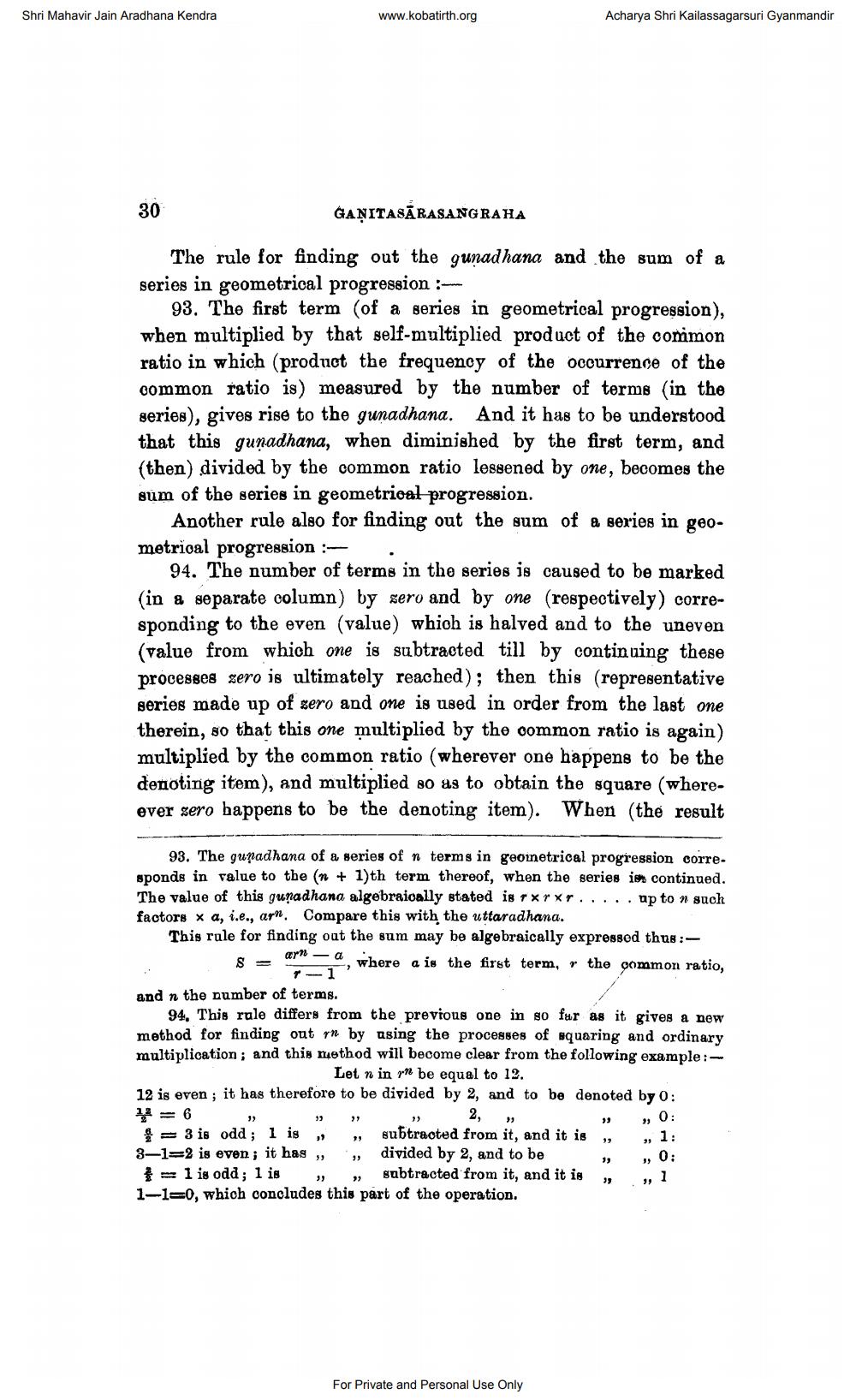________________
Shri Mahavir Jain Aradhana Kendra
www.kobatirth.org
Acharya Shri Kailassagarsuri Gyanmandir
GANITASĀRASANGRAHA
The rule for finding out the gunadhana and the sum of a series in geometrical progression :
93. The first term (of a series in geometrical progression), when multiplied by that self-multiplied product of the common ratio in which (product the frequency of the occurrence of the common ratio is) measured by the number of terms (in the series), gives rise to the gunadhana. And it has to be understood that this gunadhana, when diminished by the first term, and (then) divided by the common ratio lessened by one, becomes the sum of the series in geometrical progression.
Another rule also for finding out the sum of a series in geometrical progression : .
94. The number of terms in the series is caused to be marked in a separate column) by zero and by one (respectively) corresponding to the even (value) which is halved and to the uneven (value from which one is subtracted till by continuing these processes zero is ultimately reached); then this (representative series made up of zero and one is used in order from the last one therein, so that this one multiplied by the common ratio is again) multiplied by the common ratio (wherever one happens to be the denoting item), and multiplied so as to obtain the square (whereever gero bappens to be the denoting item). When the result
93. The guradhana of a series of n terms in geometrical progression corre. sponds in value to the (n + 1)th term thereof, when the series in continued. The value of this gunadhana algebraioally stated is Txr xr..... up to n such factors x a, i.e., arn. Compare this with the uttaradhana. This rule for finding out the sum may be algebraically expressed thus:S ara , where a is the first term, - 1
the common ratio, and n the number of terms.
94. This rale differs from the previous one in so far as it gives a new method for finding out on by using the processes of squaring and ordinary multiplication; and this niethod will become clear from the following example:
Let n in yn be equal to 12. 12 is even ; it has therefore to be divided by 2, and to be denoted by 0:
»
90:
$ = 3 is odd ; 1 is , subtracted from it, and it is 3–1=2 is even; it has , , divided by 2, and to be = 1 is odd; 1 is
subtracted from it, and it is 1-1=0, which concludes this part of the operation.
For Private and Personal Use Only




